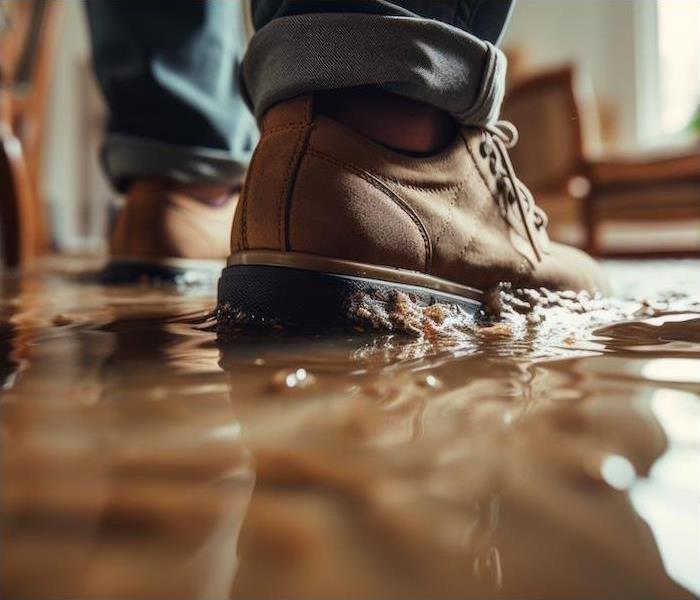Protect Your Home From Flood Damage With the Basics | SERVPRO of Tri-County
5/15/2024 (Permalink)
 SERVPRO of Tri-County is ready to help in a moments notice after spring showers leak in to your home or business.
SERVPRO of Tri-County is ready to help in a moments notice after spring showers leak in to your home or business.
When you want to do something really well, you have to start with the basics. This is really evident when your kids bring home math homework. If they don’t know the basics, everyone will end up in tears.
Relying on the basics is also a good way to prepare your home for potential natural disasters. There isn’t a lot we can do to stop Mother Nature when she decides to show off her strengths, but if our homes are ready, we will weather any storm just a little easier.
Floods are one of the top ways that homes all around the nation are damaged, which means covering the basics of flood preparation is important for all of us.
There are a number of ways that floods can leave homes damaged, and many of them don’t come from nature. Something that happens inside your home can be pretty damaging, but manmade disasters are generally easier to get under control and clean up from afterward.
Weather-related water damage can be more challenging. In this part of Georgia, heavy rains that lead to flash flooding are common throughout the year. With Toccoa Falls so close to many of our communities, river flooding from Kelly Barnes lake can also be a major issue.
One of the most basic ways you can protect your property is getting to know the flood zones in the area. When you understand your specific risks, you can take the best steps possible to be prepared.
Take note of how your yard reacts during a heavy rain as well. If you are close to the river or in a low-lying part of our community, adding extra drainage could be a good way to keep water from seeping into your home.
Most of us are in areas surrounded with a lot of leaf-releasing trees, which makes gutter covers another good idea to keep water out of your house. Taking extra care of your roof, especially in the spring when storms and wind can get strong, can also help ensure everything stays dry.
Getting to know the area around your home and community is one of the best first basic steps you can take towards getting your home ready to weather a flood well. There are some other steps you can take as well in order to prevent flood damage in your home.
Starting in your yard, make sure there is slope away from your home in order to encourage rain to flow quickly away. If there is a spot in your yard that likes to stay wet after a rain, consider adding organic material or a garden in order to force water underground. Extending your gutter downspouts can also make a big difference in keeping things dry. Consider installing them underground for extra protection.
On the inside of your home, consider your doors and windows. Every fall and spring check their seals and update the caulking around them. Watch your basement for cracks and seals, and bring in a professional to reseal it every 10 years or sooner if there are signs of aging. If you don’t have a sump pump, this is an upgrade that can make a huge difference, especially if you live near the river.
When you think about preparing your home, focus on the basics. Add a few home maintenance to your regular to-do lists so that you can rest a little easier when heavy rains move in. Being prepared for flooding will be much easier than trying to teach your kids math.
Do you have water damage in your home? Contact us at SERVPRO® for fast recovery.



 24/7 Emergency Service
24/7 Emergency Service